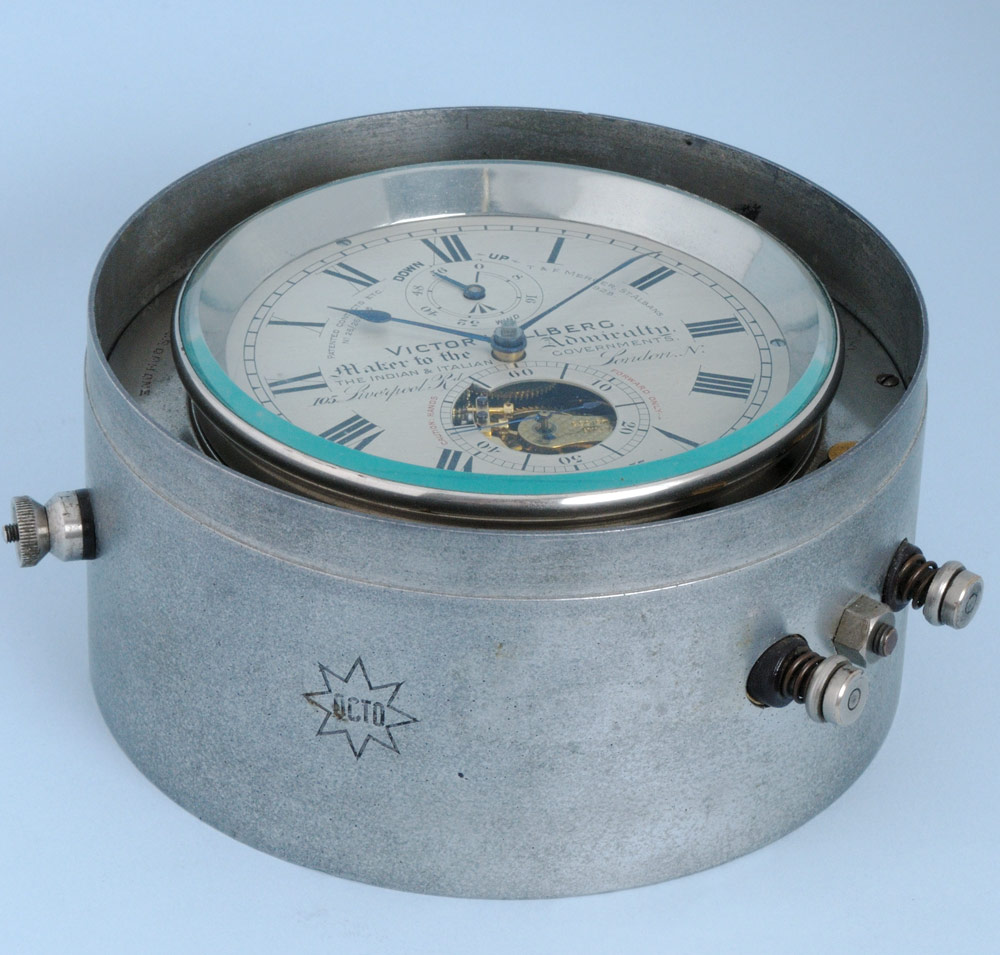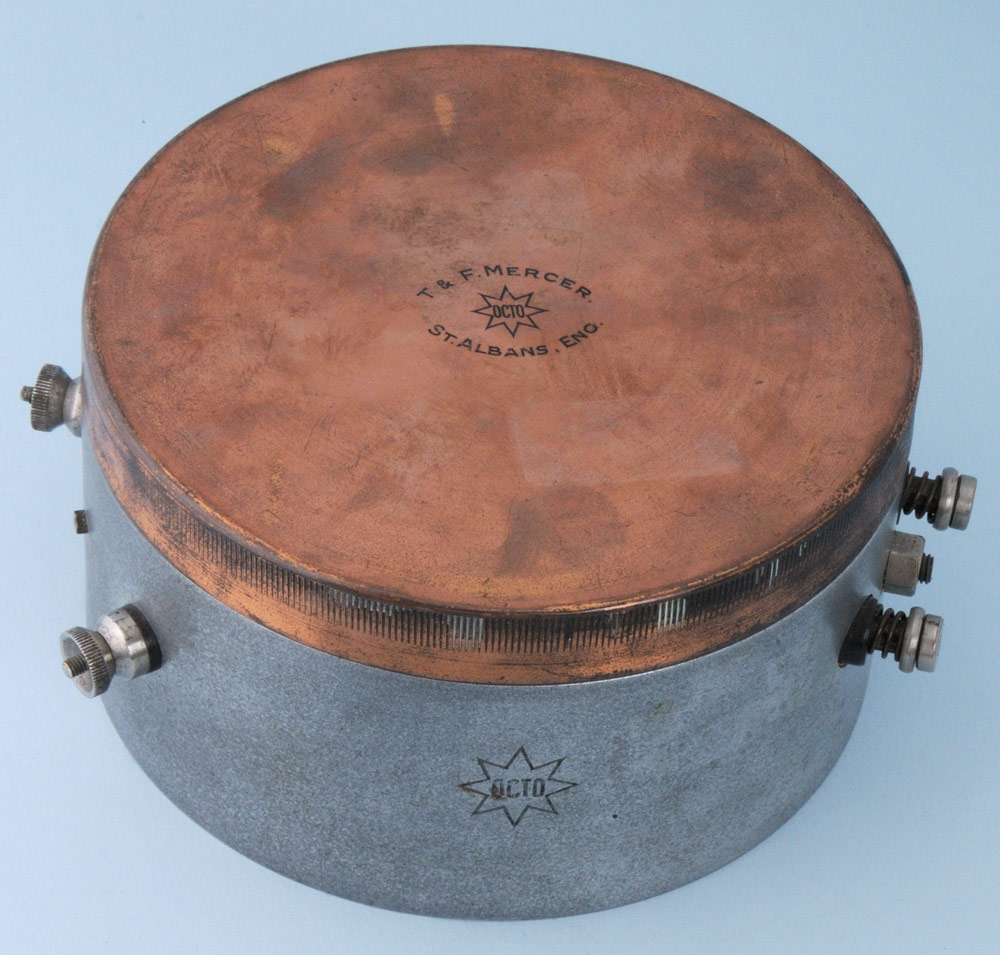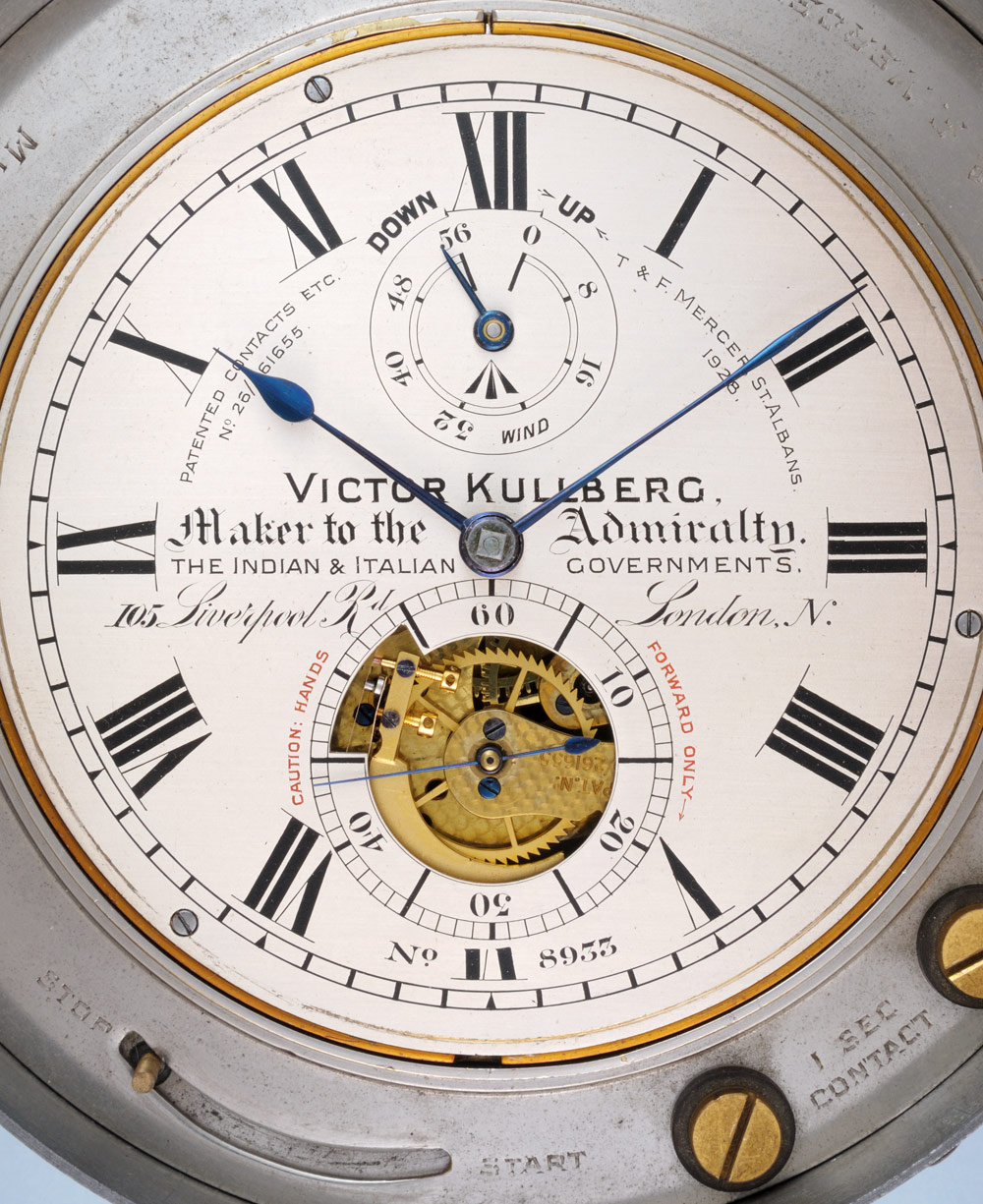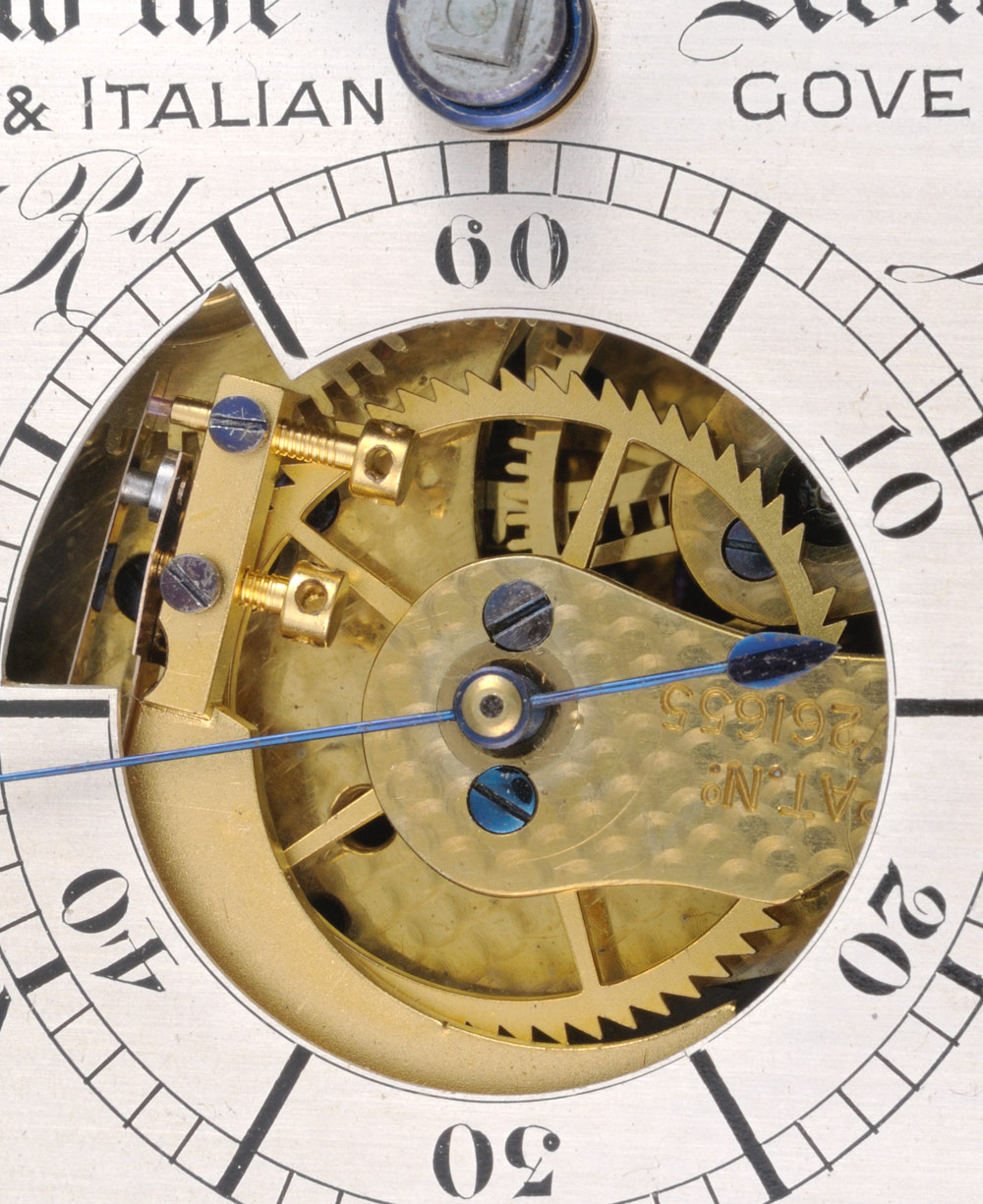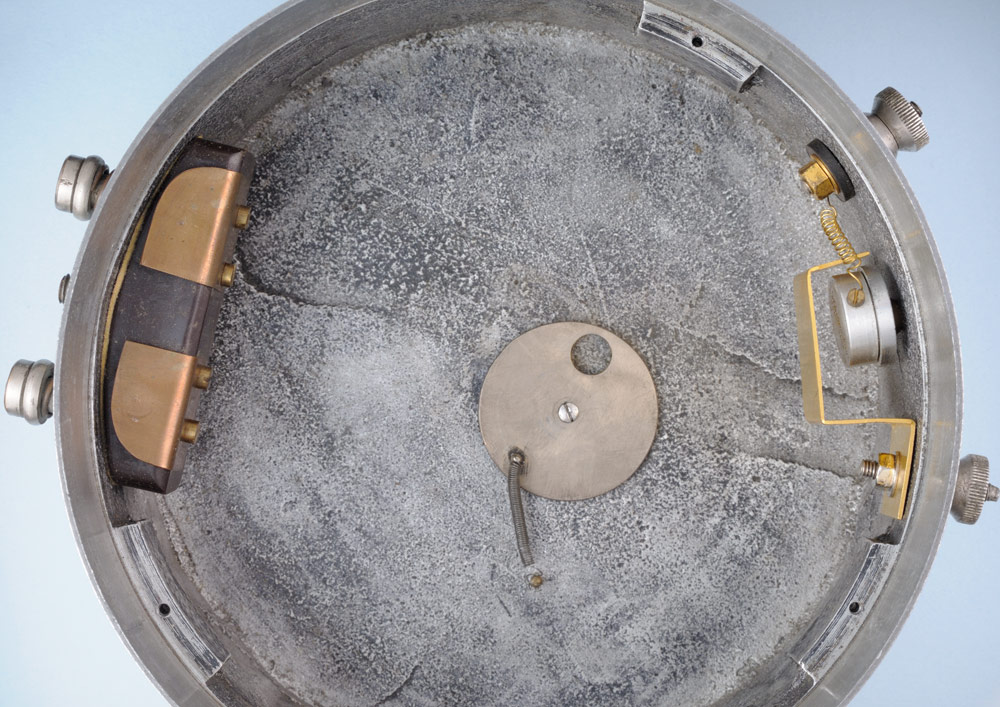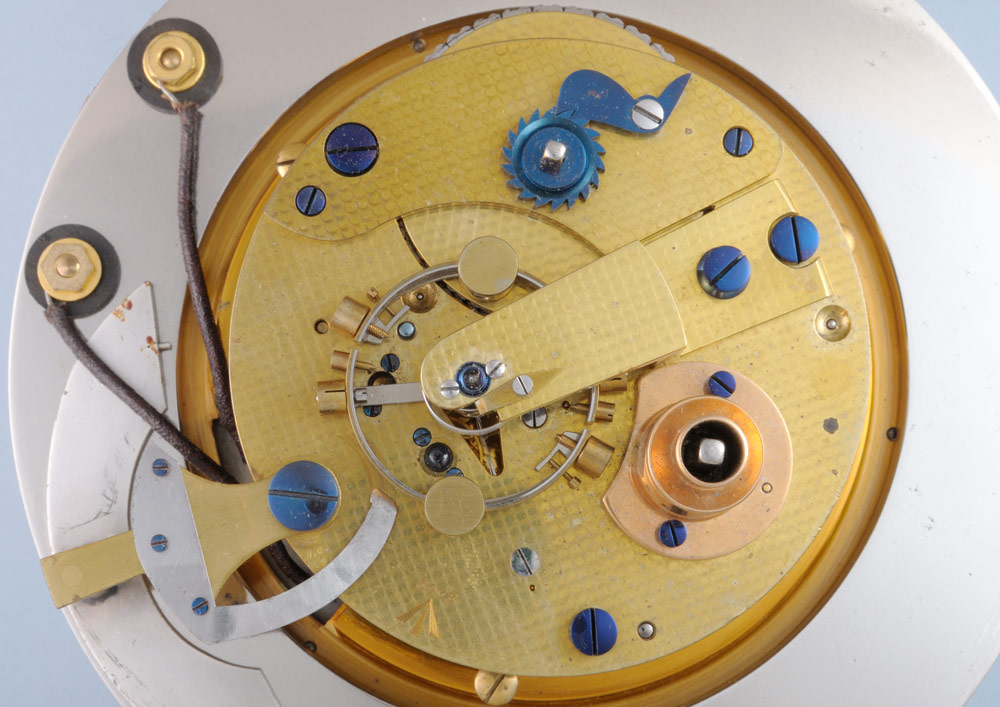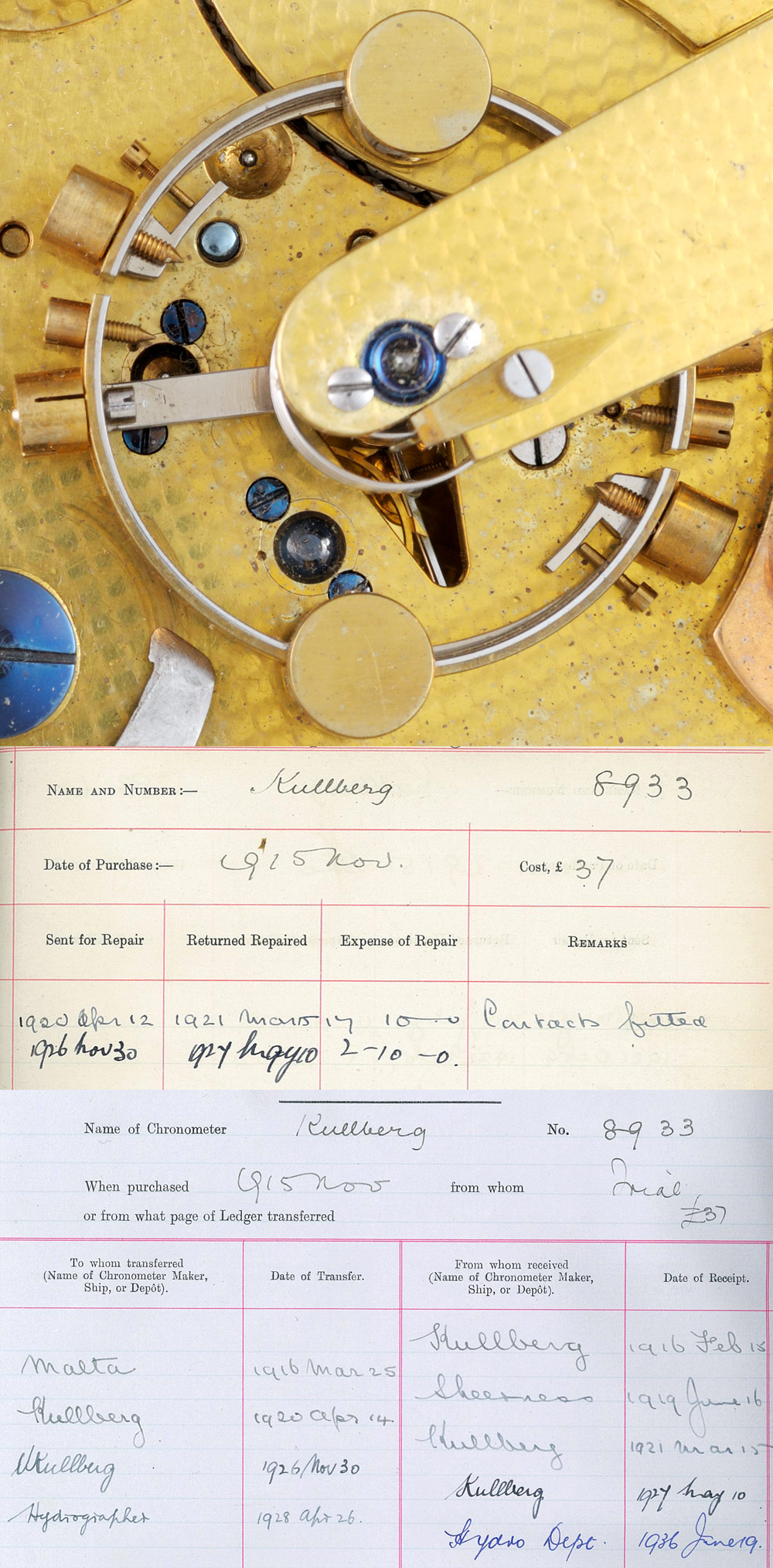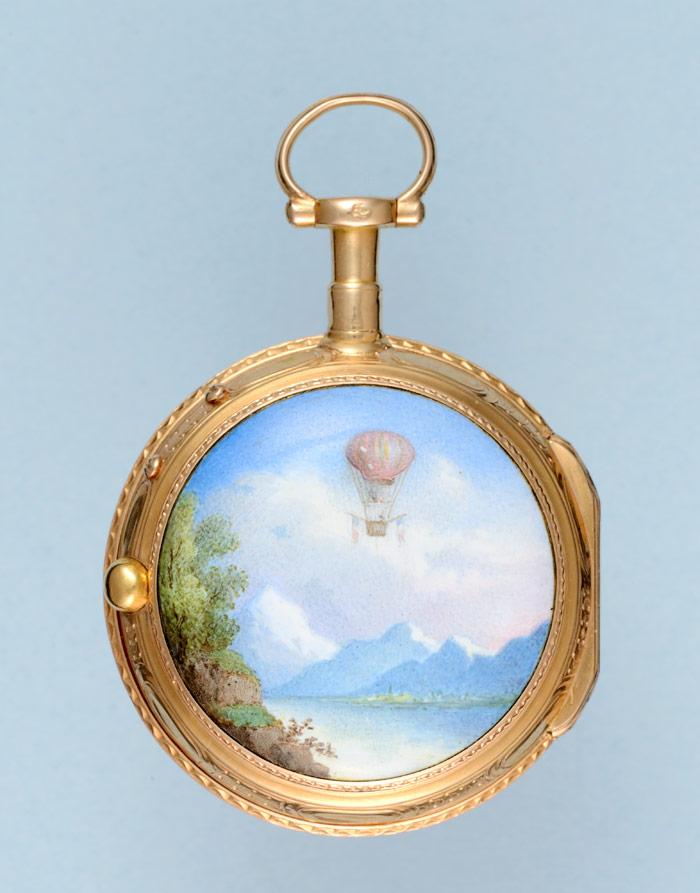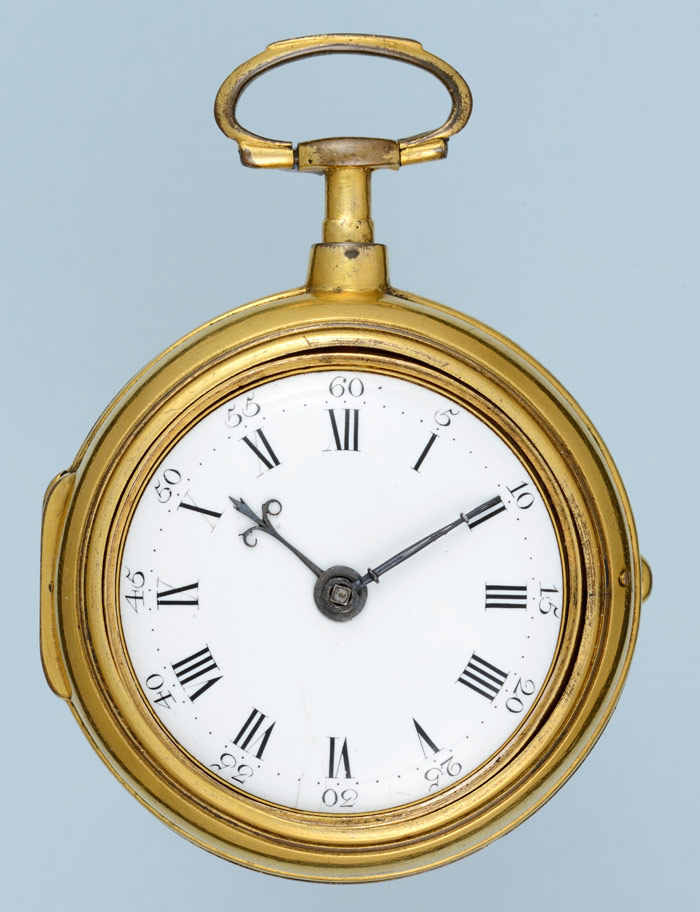A9459
Two Day Master Chronometer by Kullberg
£2,400.00
Circa 1915
Out of stock
Description
A 20th Century English two day marine chronometer by Kullberg with added timing contacts. Full plate spotted keywind reverse fusee movement marked with the broad ministry arrow, four turned pillars secured by blue steel screws. Harrison's maintaining power with steel click and blue steel spring. Blue steel barrel ratchet wheel and double toothed click on the spotted barrel bridge. Spotted cock with diamond endstone, two arm compensation balance with two circular weights and auxiliary temperature compensation, small timing screws and large timing nuts, freesprung palladium helical hairspring. Earnshaw spring detent escapement, escape pivots with endstones. The movement secured to the gilt dial plate by three brass screws. Engraved signed and numbered silvered brass dial with broad ministry arrow, subsidiaries for seconds and power reserve indication, Roman numerals, blue steel hands. Details added by T & F Mercer when the electrical contacts were added in 1928 and the dial cut away by the seconds subsidiary to accommodate them. Fitted in a circular metal case with sprung rotating shutter to the winding hole in the base, push fit chrome bezel with flat glass. Slide to stop and start the balance. External one second contacts and contacts for the microphone on the side of case to allow the chronometer to be used as a master device for slave dials. Push fit copper lid marked “T & F Mercer – St Albans Eng. Octo”.




